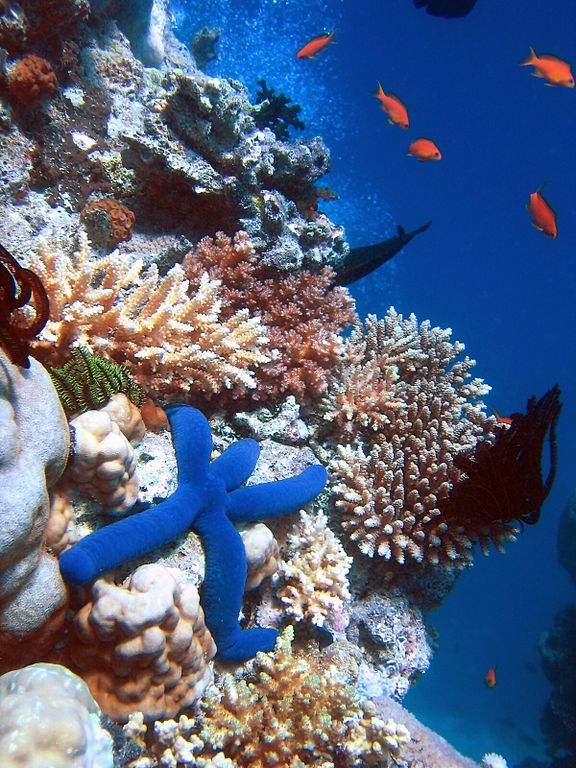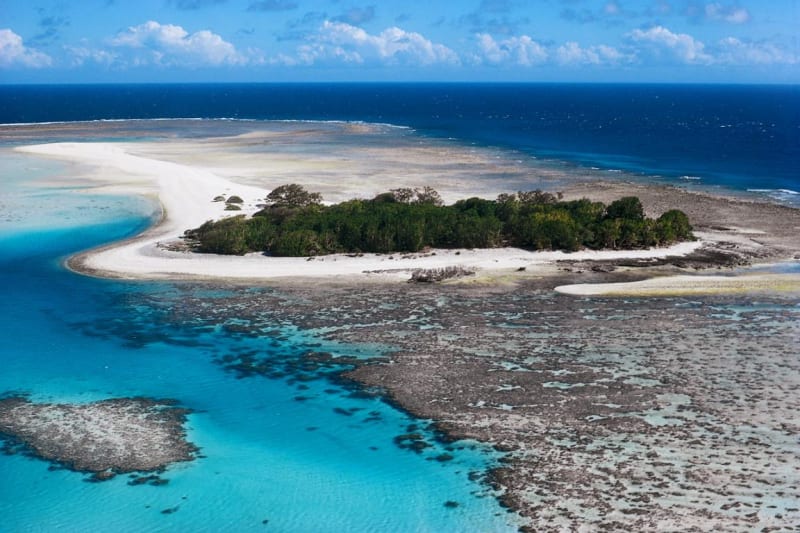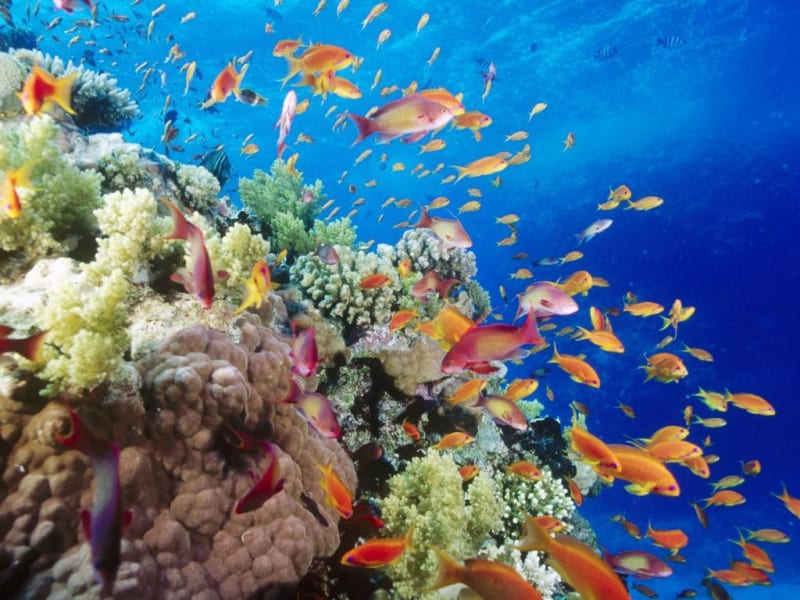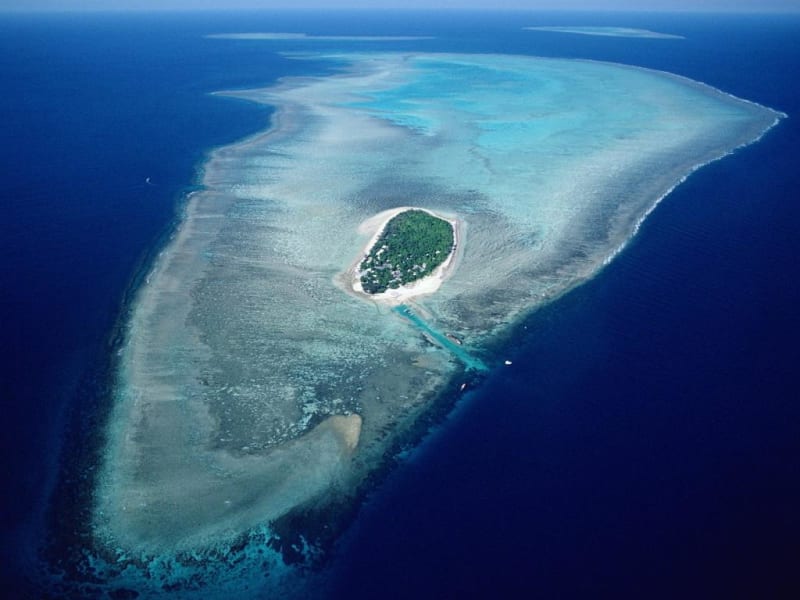Great Barrier Reef
The Great Barrier Reef is the largest coral reef formed by billions of polyps. The reef's territory is colossal - 348,698 km2, stretching from the tropic of Capricorn to the Torres Strait. The reef is located 30 km off the coast of Australia and, moving south, moves 300 km away from the coast.

Almost the entire reef is located underwater and is only visible at low tide. In order to protect the Great Barrier Reef from excessive human influence, in the form of tourism and fishing, a Marine National Park was established here in 1979 on an area of 50,000 km2. Tourism generates the main income in this region - up to $3 billion per year. According to the latest data, the Great Barrier Reef has lost almost half of its coral polyps since 1985. And the natural environment is to blame for this. After all, corals need a temperature of at least 18 °C to grow, and the water must have a certain salinity coefficient, so the reef ends near New Guinea, as the Fly River carries a lot of fresh water into the ocean there.
The skeleton for the Barrier Reef was set by hard corals from mushroom-shaped corals, brain corals and "deer antlers". The reef is heterogeneous and consists of almost 3,000 reefs ranging in size from 0.01 km2 to 100 km2. In total, the Great Barrier Reef combines almost four hundred varieties of corals, but even the most persistent of them cannot resist their natural enemy, the Crown of thorns starfish.

More than one and a half thousand species of fish have found refuge on the Great Barrier Reef. Among them, the largest fish are whale sharks, parrot fish, butterfly fish, body fish, and dolphins. Humpback whales breed here in June and August. Sea turtles have found suitable breeding conditions on the islands of the Southern Reef. In addition to them, octopuses and squid are found in these waters, as well as a large number of crustaceans: lobsters, crabs, lobsters, shrimps. It is home to one of the most dangerous animals - the blue-ringed octopus. If it is disturbed, it can easily kill a person, because there is no antidote to its poison. The octopus's venom completely paralyzes a person, and he dies of cardiac arrest. But this effect is temporary, so it is necessary to ventilate the lungs until the toxin is completely eliminated, even if it seems that the person has died.
There are almost 250 species of birds found on the islands of the Great Barrier Reef. There are many phaetons, petrels, terns, spoonbills, ospreys, and eagles among them.
The Barrier Reef attracts many tourists, but they can only visit some parts of the reef and its islands. Mining is prohibited throughout the reef, and spearfishing is also prohibited. You can't touch the reefs when diving underwater, but local keepers will tell you how to enjoy diving.





